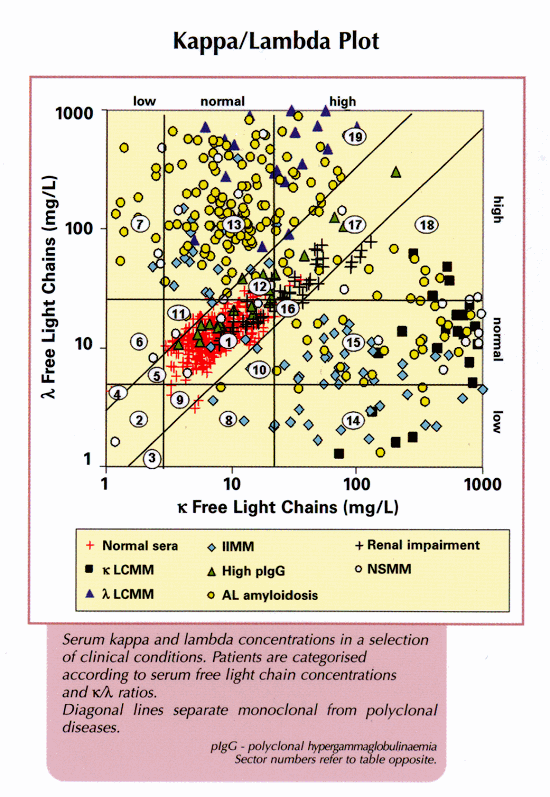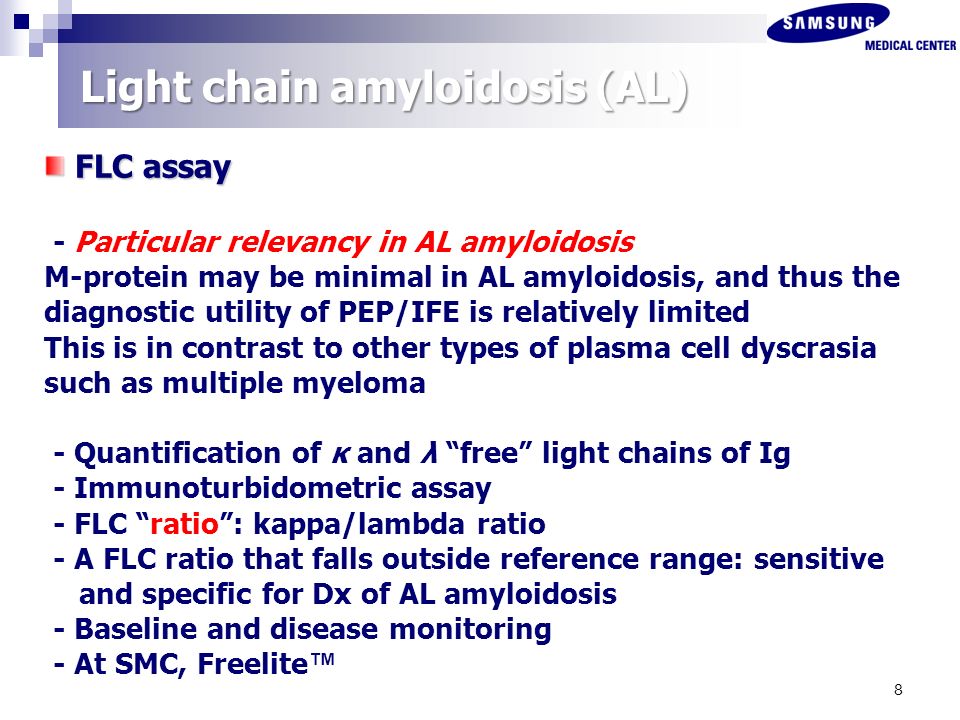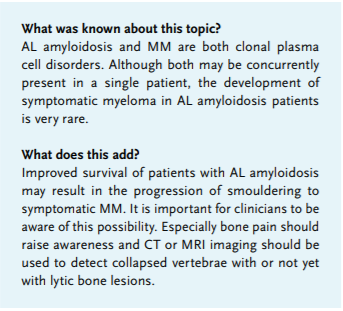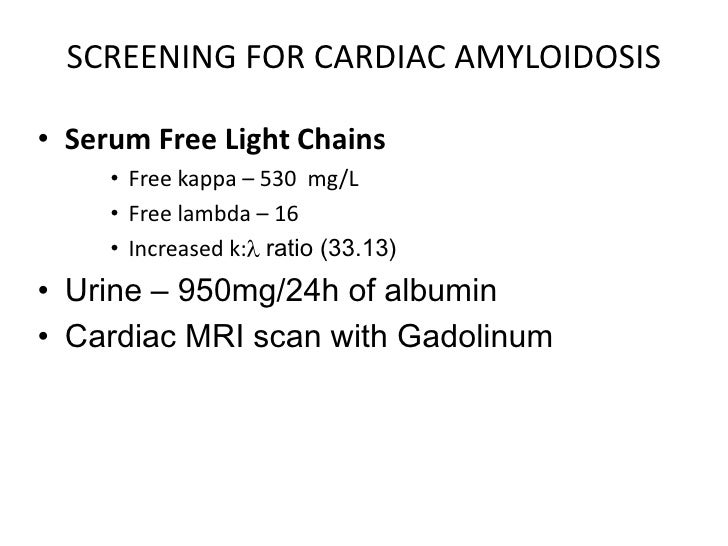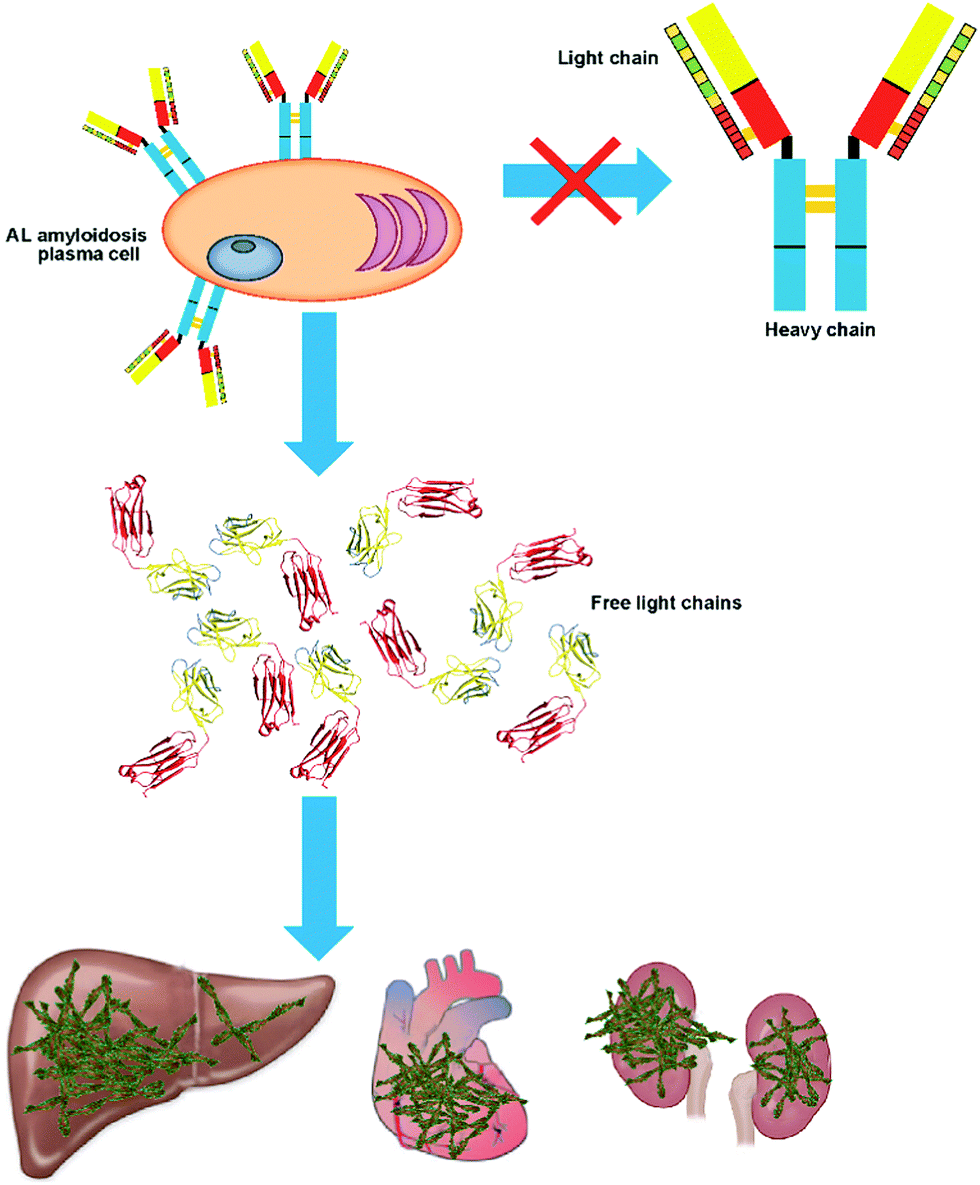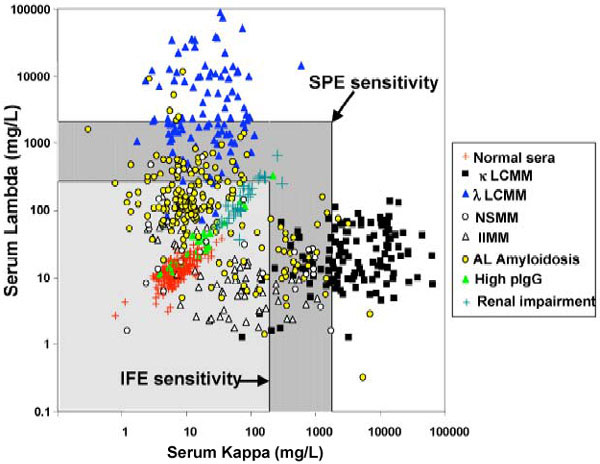Kappa Free Light Chain Amyloidosis
Mgus monoclonal gammopathy of unknown significance.
Kappa free light chain amyloidosis. A free light chains test measures the amount of lambda and kappa free light chains in the blood. There are two different types of light chain. Medications destroy plasma cells that make the light chain proteins. Early diagnosis and treatment is key to managing.
Light chain al amyloidosis is the most common form of systemic amyloidosis and is associated with an underlying plasma cell dyscrasia. Amyloid light chain amyloidosis is a protein misfolding disorder it causes organs and tissues including the heart kidney skin stomach small and large intestines nerves and liver to thicken and eventually lose function. Kappa k chains lambda l or λ chains. Simply put amyloidosis is a group of diseases characterized by the abnormal accumulation of amyloid proteins in tissues 1.
If the amount of free light chains is higher or lower than normal it can mean you have a disorder of the plasma cells. With al amyloidosis the a is for amyloid and the l is for light chain. Irene dias a 50 year old female was diagnosed with primary amyloidosis of the immunoglobulin kappa light chain and end stage renal disease esrd 1. Free light chains exist freely in the bloodstream until they deposit in the organs as amyloid fibrils which then cause organ damage.
The latest of 5 neurologists took a long shot and tested me for amyloidosis as the source of my peripheral neuropathy. Under normal circumstances concentrations of both kappa and lambda light chains are very low in the bloodstream. Light chains that get free from an antibody and misfold are the culprits for disease in al amyloidosis and during the free stage can be measured in the freelite assay test. The clinical syndromes at presentation include nephrotic range proteinuria with or without renal dysfunction hepatomegaly congestive.
Accurate and rapid classification of cardiac amyloidosis is important for patient management. This is a condition in which you have abnormal protein levels. The disease often is difficult to recognize because of its broad range of manifestations and what often are vague symptoms.


